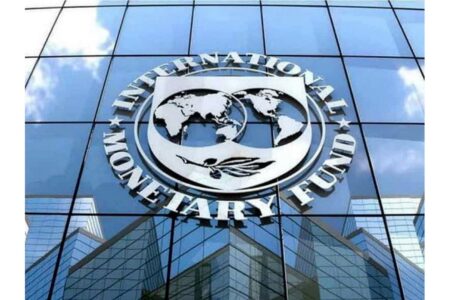- Africa’s new dawn: the rising role of digital and AI in agriculture
- Can Dangote Refinery Transform Africa Energy Ambition
- Gallup Survey: 80 per cent of Kenyan Workers Are Disengaged and Seek New Opportunities
- Madagascar Man Freed from 5KG Tumor After 15-Year Struggle
- How women in Africa are perceived and treated
- Sugar consumption in Kenya to Increase to 1.23 Million Tonnes
- Can Somalia and Turkey Oil deal Bring Change in Somaliland
- Remittances to Kenya dropped to $371.6 million in June, marking a six month low
Browsing: IMF economic outlook report
- The IMF says latest tranche is meant to finance “general national development efforts.”
- When the entire Extended Credit Facility ECF is disbursed, Tanzania will be eligible to receive in excess of $304.7 million.
- Tanzania faulted for not publishing audit report of its Covid-19 pandemic-related spending.
The International Monetary Fund (IMF) has approved $153 million in credit financing for Tanzania. The loan, however, comes with a tough call for enhanced monitoring and transparency in public spending.
This financing is only the first part of the loan that was issued following the completion of the first part of the country’s Extended Credit Facility (ECF) review. When the full ECF is completed, Tanzania will be eligible to receive in excess of 4. (https://pragermetis.com/) 7 million.
What is the loan for? According to the public statement released after the deal was signed earlier this month, the money is meant to finance “general …
The Horn of Africa region – Eritirea, Ethiopia, Sudan, Djibouti and Somali – has faced persistent food shortages due to a mix of climatic conditions and conflict in some parts of the region. Over 22 million people face a dire lack of food, a decade after setting the global sustainable development goals (SDGs).
Four consecutive seasons of failed rains in the region and in Northern Kenya has threatened to further exacerbate the food situation in the Horn.
The single known reason why rains are failing in what is supposed to be the world’s most rain rich region is climate change, and that is not a natural disaster, it is man made.
Also Read: The economics of harvesting rain
Weather patterns have changed. Seasons have become unpredictable. The phenomenon explains itself, weather, by definition is the condition of the atmosphere at any given time, but climate is the noted weather patterns …
The International Monetary Fund (IMF) said that it foresees a 4 percent GDP for the Middle East and North Africa (MENA) in 2021 and 3.7 percent in 2022.
In 2020 the projections were at -3.4 percent and 3.1 percent in IMF’s October regional outlook forecast for 2021.
According to IMF’s April regional report released yesterday, MENA importers in 2021 will record a GDP of 2.3 percent and 4.5 percent in 2021 a rise from -0.8 percent in 2020.
Speaking during the sidelines of the World Bank’s and IMF’s meeting, the Director of the Middle East and Central Asia Department, Jihad Azour said that “Our region reacted swiftly and with resolve, implementing measures that helped contain the pandemic spread and cushion the economic blow. Now, a year later, the novel coronavirus (COVID-19) vaccine and favorable external environment, offer hope that the end of the crisis is within sight.”
He said that …
The International Monitory Fund (IMF) predicts that the economic growth for Ethiopia in 2020 is 1.9 per cent while its growth in 2021 will be at zero.
This is from IMF’s Regional Economic Outlook of Sub Saharan Africa under the title, ‘A Difficult Road to Recovery.’ The report shows how African countries’ economies have been hit severely by the covid-19 pandemic.
According to the report, the economic growth of African countries in 2020 has significantly dropped due to the pandemic and estimates a worse forecast than the ones in its April reports.
The report further states that this year very few countries have has positive improvements in terms of growth while the rest are below zero and the majority are in negative performance.
According to the report, in the Ethiopia budget for the year that ended on July 7, 2020, the county’s economic growth has shown a massive drop in …








